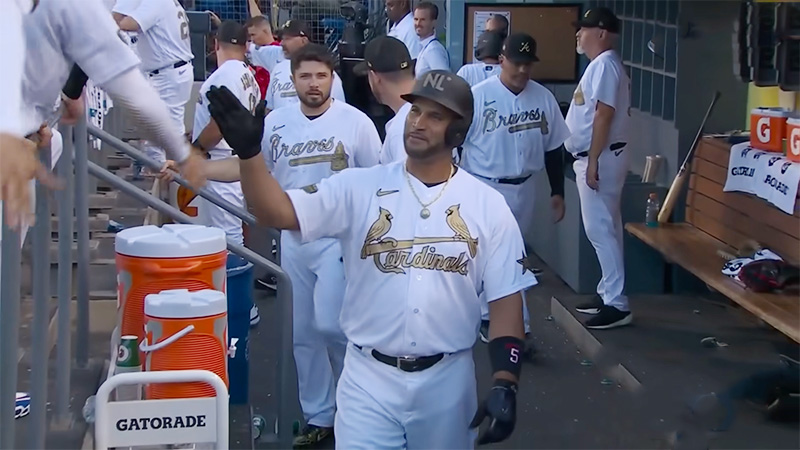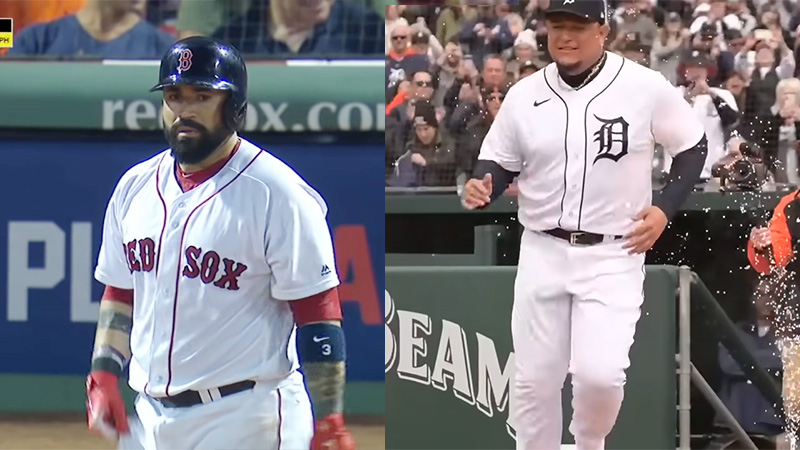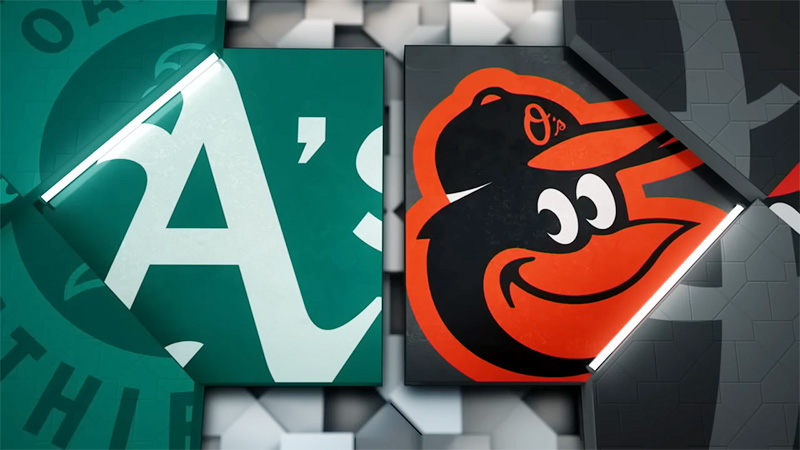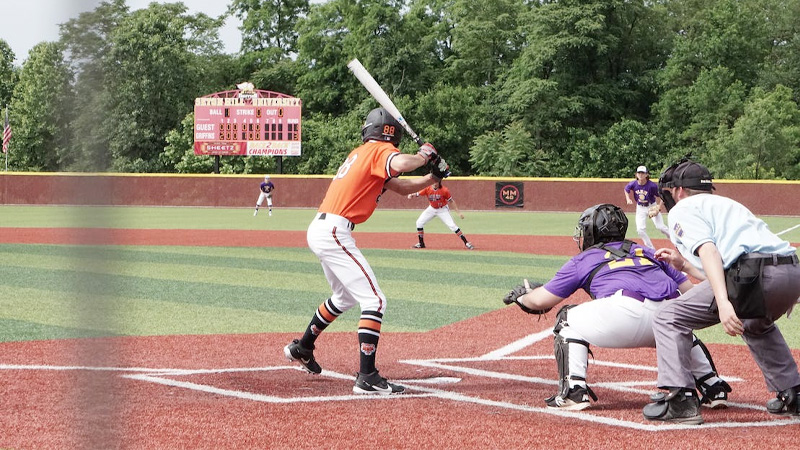Have you ever been to a Baseball tournament that ended with a tie? Then, you might have witnessed the rarest things in baseball.
A lot of sports can result in ties. But in baseball, only a few lower leagues can lead to ties. In the case of Major League Baseball, it’s near to impossible.
With a tie in Baseball, you have an extended game. And a prolonged game can often be boring for spectators. Is this the only reason? Can you tie in baseball? We will figure this out today.
Can You Tie in Baseball?
Baseball is a game with clear intentions. For a regular fan of baseball, you know already that this game aims to derive definitive results.
Unlike other sports like soccer or hockey, where ties are an acceptable outcome, Baseball leagues are deeply ingrained in the rules and principles.
In regular seasons, MLB doesn’t allow ties in baseball. The game continues until there is a clear winner. However, when two teams score the same number, only then do ties occur in regular circumstances.
Players continue to move on to additional innings until one team outscores the other. Extended time ensures that a winner is determined, even though it takes extra innings to achieve that outcome.
However, similar scores only occur once in a while. Most of the baseball ties happen due to poor weather conditions or when there is an official statement to hold the game.
Throughout baseball history, there have been several records of baseball ties that took place in cloudy, hazy weather. We will bring up some examples in this article.
Wildest Ties in MLB History
Here are a few references to the craziest and most unforeseeable MLB ties (from 1949-2016).
Ties are not a regular phenomenon in baseball. Since 2000, there have only been two significant ties in MLB. You can only imagine how rare ties are in baseball!
1) Cubs & Bucs Secure A Tie

On the event of September 29, 2016, Cubs & Buc ended the match with a tie-in result. It was due to ongoing rain & hazy weather. Both teams scored 1-1 on top of their 6th innings.
They began like any other day, with both teams aiming to secure a victory. The Cubs, who were enjoying a highly successful season, were looking to further solidify their position atop the National League Central division, while the Bucs sought to play the spoiler role.
The game progressed and it became apparent that neither team would back down easily. Both offenses were potent, and the pitchers found themselves facing formidable lineups.
At that point, with no winner in sight, the game was officially declared a tie. The decision to end the game in a tie was met with some controversy and disappointment.
However, it was ultimately made to prioritize the welfare of the players and avoid excessive strain on them. No makeup match was scheduled and their post-season schedules were already determined.
2) The Infamous All-Star Tie

In 2002, the then-current commissioner Bud Selig ended the game in a tie after 11 innings. As stated, it was due to both teams going low on pitchers. The play had a controversial ending with a 7-7 tie.
The tie in 2002 had a significant change in the All-Star Game format. Starting in 2003, the league implemented a rule stating that the winning league in the All-Star Game would secure home-field advantage in the World Series – until 2017.
This change added more meaning and competitiveness to the exhibition game, ensuring that the outcome would have a direct impact on the postseason.
3) Cubs & Cardinals: The Dirty Tie
On April 12, 1965, in the early spring of Chicago, things went tough since day 1 of the match. Funny it may seem but the team had to apply green vegetable dye on the brown field just to make it seem perfect.
But little did they know! Both the teams continued playing in this condition until the umpire ruled out the field condition and declared the field unplayable due to mud pits piling up around the outer field.
Pete Marcantonio, the then superintendent from the grounds crew stated that “ This is the toughest time we’ve ever had getting everything done ” when he was asked about Wrigley Field.
4) Red Sox & Tigers Tie With Highest Scores

You probably don’t know which baseball tie ended up with the highest score. Allow us!
The baseball game that took place on May 3, 1949, between the Boston Red Sox and the Detroit Tigers, is remembered as one of the highest-scoring and most unusual games in Major League Baseball history.
The final score of the game was an astonishing 14-14 tie, a result that is exceedingly rare in professional baseball.
The total of 28 runs declared it one of the highest-scoring games in baseball history, further adding to its significance.
The Red Sox vs. Tigers game has since become part of baseball lore and is frequently mentioned when discussing remarkable and unusual moments in the sport’s history.
5) Athletics & Orioles Scored 6-6

On July 4, 1964, an intriguing baseball game between the Kansas City Athletics and the Baltimore Orioles ended in a rare tie. The game took place at Memorial Stadium in Baltimore, Maryland.
The Athletics and the Orioles were both American League teams, and their matchup on Independence Day drew a large crowd of fans eager to celebrate the holiday with some baseball action.
When it was 8.30 PM at Maryland, both teams had 6-6 before nine innings. However, it was unfortunate that the team had to start all over to secure victory!
This was due to the Major League Rule stating that any match that resulted in a tie before nine innings would have to be played over again.
Fans were thrilled but also the long duration of time took a toll on them. As reported by the Baltimore Sun, “Announcement that there would be no overtime play was roundly booed.”
Ties in baseball history have been frequent in the early years of this sport. But they became increasingly rare as rules and procedures were refined.
Major League Baseball now has specific tiebreaker rules in place to ensure that a definitive outcome is reached in regular-season games.
Baseball Tie – Factors Behind
There are different reasons why authorities declare a tie in a baseball game. While the weather can be the most common reason to blame. You should check out these other factors too:
Unlucky Weather:
Poor weather – particularly rain is one of the most common reasons behind resulting in a tie. You have already read about the dirty tie between the Cubs and the Cardinals.
There are many examples of this where the team has to back off due to adverse weather. However, the MLB made a clear point about that.
When the match is delayed due to weather, there is a mandatory minimum of 30 minutes gap before the play can actually resume. In case the weather doesn’t turn right, it is up to the umpire to call the game.
He can reschedule the game to another date or tie it if needed.
Unforeseen Situations:
Remember the COVID-19 lockdown when life came to a standstill? However, we were informed of the situation beforehand. Nonetheless, for such situations as Curfew, Lockdown, or unlimited power outage arises, the match has to be suspended.
In case the game has progressed to a point where it is considered official (usually five innings or four and a half innings and the home team is leading), it is declared a suspended game.
The game is then rescheduled to be completed from the point of suspension, and the result will be determined when the game is played to completion.
It is not unusual for a suspended match to result in a tie. Thus, you have a tie!
Exhibition Baseball Match:
Once in a while, you must have been invited to a friendly baseball match with your neighbors or colleagues. These are called Exhibition Matches. There is no win or loss in these matches.
They are organized for various purposes, including entertainment, promotional events, or showcasing specific players.
In these matches, the importance of determining a winner may not be as crucial as in regular season or playoff games. Thus, ties may be accepted as a result, allowing both teams to showcase their skills without a decisive outcome.
MLB Tiebreaker Rules
In the world of international baseball competitions, tiebreaker rules are often implemented to determine a winner. Events like the Olympics or the World Baseball Classic showcase top talent from different nations and require a clear victory.
Tiebreaker rules can vary depending on the tournament, but they typically involve additional innings, designated tiebreaker runners, or even mini-games to determine a conclusive outcome.
While baseball aims to determine a winner in every game, ties can occur in certain scenarios. However, rules can be applied differently based on the nature of the league. In the following, we will learn how different leagues deal with a tie.
How Different Baseball Leagues Deal With Tie
Different baseball associations handle ties in a match differently. Although MLB provides clear guidelines for baseball, rules may not be applied in all scenarios the same.
College Baseball League
College baseball leagues exist within colleges and universities. It is a popular form of amateur baseball; performed at the collegiate level – primarily among students enrolled in higher education institutions.
In College Baseball, there can be a tie when both teams or one of them are short in pitchers. As pitching requires delivery of speed and tactics, not all players are allowed to act as pitchers on the stand. Thus, the match will be declared a tie.
There can be other issues like when the match reaches the curfew time – both teams have to leave for home; thus the game can’t be allowed to extend any further. Note that, weather conditions apply the same in their case also.
Major League Baseball
This is where all the rules are set. MLB sets the rules for baseball ties. These are genuinely applied in MLB tournaments.
In major league baseball, poor weather can be a reason to tie a match. However, in case the team doesn’t turn out on the rescheduled date to complete the tie, the final results will be declared in the tie.
MLB has set the rules and procedures to ensure that most games have a conclusive outcome, with a clear winner and loser. However, there have been a few exceptional cases throughout MLB history where games have ended in a tie.
Amateur Leagues
Amateur leagues are for recreational or non-professional purposes. These leagues are open to individuals who are not compensated for their participation and do not play at a professional level.
For such amateur tournaments, ties can occur when there is darkness or adverse weather. This is because often amateur leagues lack a proper lighting system or shade to prevent raindrops.
Nonetheless, there is a standing system to avoid ties in amateur leagues – 2 points to reward the winning team.
Be Ready for the MLB 23rd Season
We are almost at the end of our article. It is important to wrap things up and ensure you have a clear and cut idea about baseball ties. Can you tie in baseball? Yes, you can – conditions applied
However, as the 23rd season is up in the hands, revise these few facts. When all these facts below mentioned fails, a tie can be initiated:
- The team had a higher regular-season head-to-head winning percentage.
- The team that has the most victories overall in intra-division contests.
- Team with the most victories in league matches overall.
- Team with the best record in the season’s final 81 intraleague games.
- Until a tie is broken, the team with the best record in the season’s final 82 intraleague games moves back one game.
Wrapping Up
While rare, ties can occur in baseball under specific scenarios. Whatever you may say, rain delay, extra innings ties, playoff games, and international competitions all have their unique rules when it comes to ties.
By understanding these rules, you can add a layer of interest to the play and showcase the versatility of baseball.
So, can you tie in baseball? As a sport that embraces both tradition and innovation, baseball continues to captivate fans worldwide, regardless of whether it ends in a victory, a loss, or a tie.







